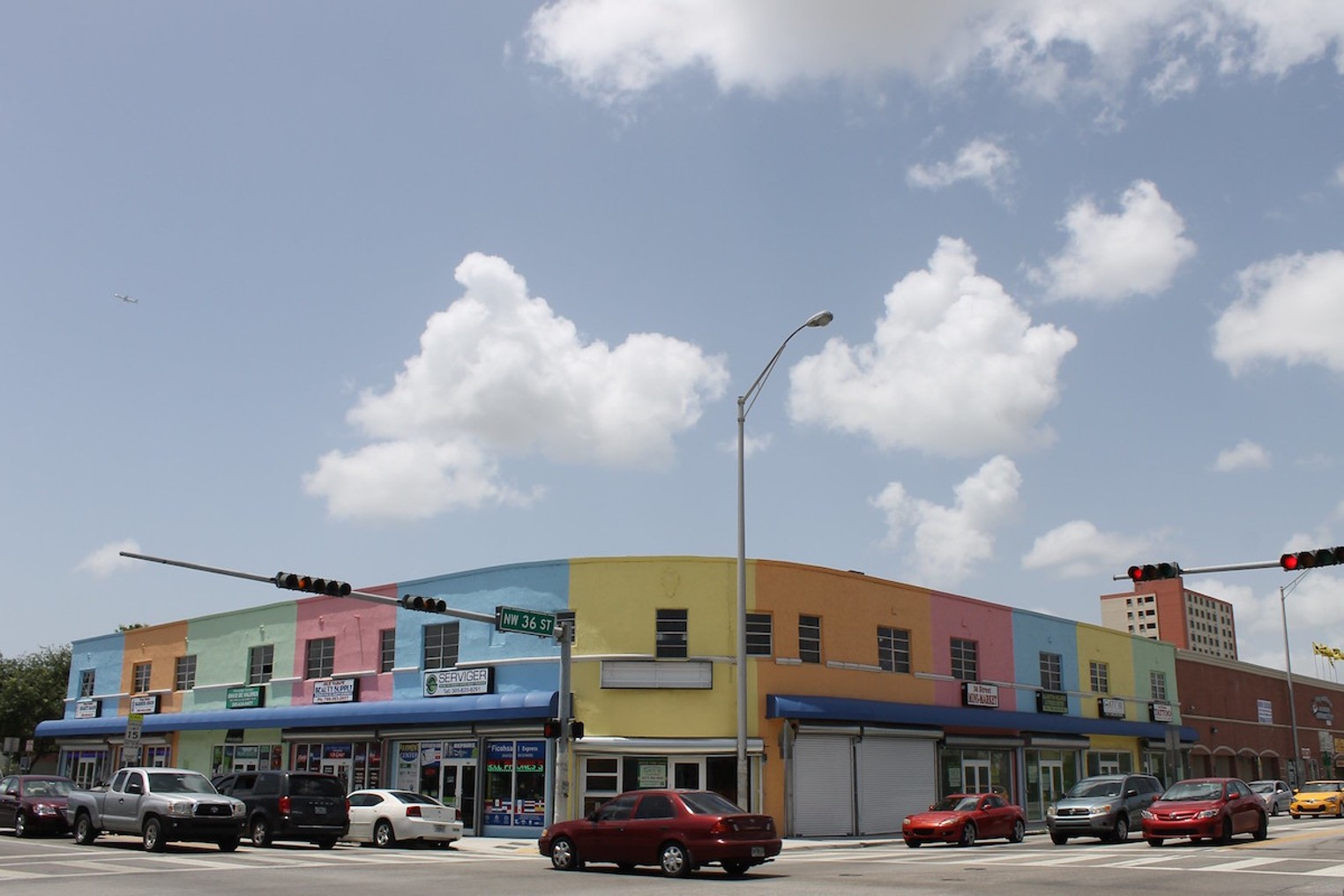Miami’s Little Santo Domingo Makes Endangered Historic Places List
As developers eye projects west of Wynwood, this section of Allapattah (derived from the Seminole Indian word for alligator) may be as endangered as its Florida namesake once was, according to the National Trust for Historic Preservation.
The trust has named Little Santo Domingo one of America’s 11 Most Endangered Historic Places, saying the neighborhood is threatened with “over-development, displacement, and cultural erasure” thanks in part to its prime location.
“This designation from the National Trust should serve as a wake-up call, reminding our leaders of how special this community is and how development needs to take a balanced approach to preserve history and culture while still creating a vibrant, inclusive community,” Mileyka Burgos-Flores, a Dominican-American activist and director of the Allapattah Collaborative, said in a statement.
Formally named Little Santo Domingo by the City of Miami in 2003, the district is nestled between Juan Pablo Duarte Park and Miami Jackson Senior High School. It’s the only Hispanic location on the historic preservation group’s 2023 endangered list.
Tania Jauregui, owner of Nitin Bakery, tells New Times she feels high-rise development is going unchecked in Little Santo Domingo, exacerbating the rental crisis.
“Wynwood is running out of space, and they are coming here,” she says.
Jauregui says her bakery draws people from around the county for its bizcocho Dominicano, a meringue-frosted cake popular in the Dominican Republic.
The neighborhood is a primarily Hispanic, working-class enclave that Jauregui fears may soon get snapped up by gentrification. She says she and her neighbors do not have the bread for more rent hikes.
In keeping with Miami’s status as one of the least affordable cities in the country for housing, apartments in the area regularly go for more than $2,000 a month.
“I am afraid we are losing the neighborhood,” Jauregui says.
Little Santo Domingo lies in the heart of Allapattah, a 4.6 square-mile community mostly inside the City of Miami proper, bordered by Northwest 27th Avenue on the west, I-95 on the east, State Road 112 on the north, and NW North River Drive on the south.
“Little Santo Domingo is a vibrant center of entrepreneurship and Dominican culture in Allapattah, one of Miami’s oldest neighborhoods. This commercial district is home to more than 300 distinctive small businesses that are fighting to survive,” Katherine Malone-France, the National Trust’s chief preservation officer, said in a statement.
In 2019, the neighborhood received a Main Street America designation “as a means of protecting community identity and fostering economic resilience,” according to the National Trust.
A string of new high-rise projects in and around Little Santo Domingo may provide a glimpse of what’s in store for Allapattah as developers and real estate holding companies seek to capitalize on the community’s desirable location and ballooning South Florida rents.
Among the developments currently under construction along NW 17th Avenue is Neology Life Development Group’s $100 million project with a planned 14-story, 323-unit apartment building and 13,133 square feet of retail space. The building has been named “The Julia” after Miami’s founder, Julia Tuttle, and is expected to open in February 2024.
In 2021, a few blocks north of the Julia site, Neology opened its 192-unit No. 17 Residences, which was “100-percent leased in record time,” the company says. On Apartments.com, the cheapest available unit listed for the building runs $2,030 a month for 575 square feet of space. (Before the worst of the rental crisis struck, Forbes had reported that units in the then-unfinished building would rent for as low as $1,200.)
Neology says its “mission is to transform overlooked, urban communities into vibrant, sought-after neighborhoods.” The company paints its residential high-rises as luxurious but affordable spaces for working Miamians. A third Allapattah apartment development by Neology, called Fourteen Allapattah, broke ground in November 2022, The Next Miami reported.
Meanwhile, Legacy Residential’s new Allapattah apartment building on NW 19th Street has one available unit, a 950-square-foot space, listed for $2,400. Legacy says the complex is an “executive enclave” with a “unique blend of convenience and affordable living.”
South Florida saw one of the most dramatic rises in rents in the U.S. over the past two years, largely driven by a pandemic-era influx of residents from the northeast and South American investors fleeing turmoil in their home countries.
Jauregui says Miami city government has not taken the steps necessary to rein in the crisis and curb development that stands to drive rents higher.
“We feel we have no support from our Miami commissioner,” Jauregui says. “We don’t know him and feel he doesn’t care.”
Miami District 1 Commissioner Alex Díaz de la Portilla, who represents Flagami, parts of Little Havana, and Allapattah, did not respond to an email seeking comment.
According to Díaz de la Portilla’s bio on the City of Miami’s website, he has “championed an improved quality of life for the residents of District One through investments in infrastructure, parks, and cleanliness.”
Originally Seminole land, the area now known as Allapattah underwent industrial and residential development in the early 1900s with the arrival of the Florida East Coast Railroad. A large African-American population moved into the community in the 1950s, and Cuban immigrants later settled there following the Cuban Revolution, alongside Caribbean and Central American migrants. By 1975, the neighborhood was 75 percent Hispanic, according to the National Trust. An influx of Dominican and Haitian immigrants in the 1980s contributed to the neighborhood’s current demographic makeup.
The buildout of the $425 million River Landing project beginning in 2018, which included more than 500 apartments and 345,000 square feet of commercial space, marked a new era of development interest in Allapattah.
Daniel Ciraldo, executive director of the Miami Design Preservation League, told New Times in October 2022 that newer, sleeker units that are replacing historic residential buildings in the Miami metropolitan area command higher rents, further entrenching the housing affordability crisis.
Ciraldo said that while older buildings might not be as fancy, they offer “naturally occurring affordable housing.”



